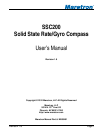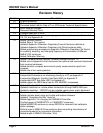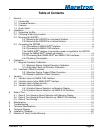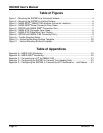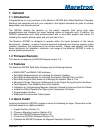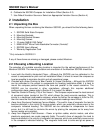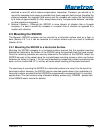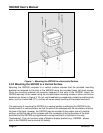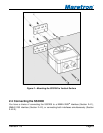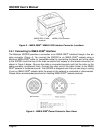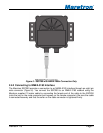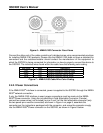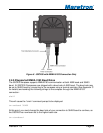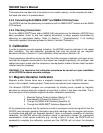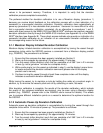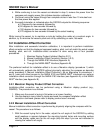
Revision 1.8 Page 3
®®
switched on and off, which makes compensation impractical. Therefore, you should try to
mount the compass as far away as possible from these magnetic field sources (doubling the
distance between the magnetic field source and the compass will reduce the field strength
by a factor of approximately 8). Also, always observe any “compass-safe distance” markings
on other electronic equipment.
6. Minimal Vibration – Although the SSC200 is more tolerant of vibration than a fluxgate
compass, it is best to mount the compass in a location free of vibration as opposed to a
location with vibration.
2.3 Mounting the SSC200
The Maretron SSC200 compass can be mounted to a horizontal surface such as a floor or
deck (Section 2.3.1) or it can be mounted to a vertical surface such as a wall or bulkhead
(Section 2.3.2).
2.3.1 Mounting the SSC200 to a Horizontal Surface
Mounting the SSC200 compass to a horizontal surface requires that the provided mounting
brackets be fastened to the bottom of the SSC200 using the provided brass flat head screws.
Once the mounting brackets are securely fastened to the bottom of the SSC200, attach the
SSC200 securely to the vessel using the included brass mounting screws or other non-ferrous
fasteners as shown in Figure 1. Do not use threadlocking compounds containing methacrylate
ester, such as Loctite Red (271), as they will cause stress cracking of the plastic enclosure.
The usual way of mounting the SSC200 to a horizontal surface is to mount it to the top of the
horizontal surface; however, the SSC200 may be mounted upside down to the underside of a
horizontal surface, provided that the SSC200 is programmed to recognized that it is mounted
upside down. This can be done using a Maretron display product (e.g., DSM200 - please refer
to the DSM200 user’s manual for details).



